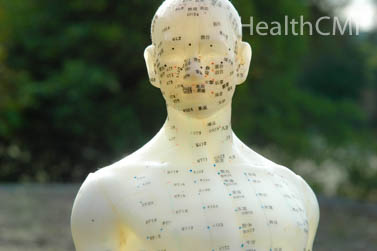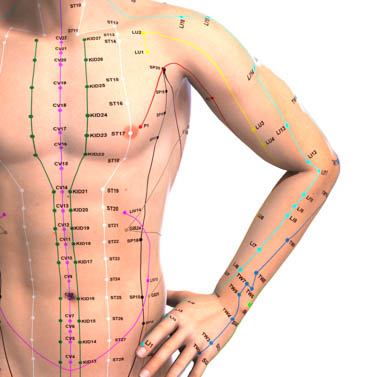Acupuncture boosts antidepressant medication effectiveness and balances biochemistry. Researchers from Tianjin University of TCM (Traditional Chinese Medicine) found that adding acupuncture to a fluoxetine drug therapy regimen of care increases the total effective rate by over 10%.  In addition, the onset of clinical benefits was quicker for patients receiving acupuncture combined with paroxetine than for patients only receiving paroxetine, also known by the trade name Paxil.
In addition, the onset of clinical benefits was quicker for patients receiving acupuncture combined with paroxetine than for patients only receiving paroxetine, also known by the trade name Paxil.
Fluoxetine is a serotonin reuptake inhibitor (SSRI) used for the treatment of depression, anxiety, panic attacks, and obsessive-compulsive disorders. Two randomized groups were compared. The fluoxetine group had a 77.05% total effective rate for the treatment of depression. The acupuncture plus paroxetine group had a total effective rate of 88.85%.
The experiment reveals an important effect on blood chemistry for patients with depression. Acupuncture successfully regulated (interferon) IFN-gamma and (interleukin) IL-4 levels. The Tianjin University of TCM research is consistent with the findings of Zheng et al. finding patients suffering from depression have increased IFN-gamma levels and low IL-4 levels. The addition of acupuncture to the regimen of drug care successfully decreased IFN-gamma levels while increasing IL-4 levels. This regulatory function demonstrated by acupuncture’s effect on biochemistry demonstrates a homeostatic effect.
The findings suggest that depression presents challenges to the immune system and that acupuncture mediates immune system responses. S. R. Paludan from the Department of Medical Microbiology and Immunology at the University of Aarhus in Denmark notes, “The two cytokines interleukin (IL)-4 and interferon (IFN)-gamma play major roles in the generation and regulation of immune responses.” Paludan adds that the “functions of IL-4 and IFN-gamma place the two cytokines at cardinal positions in the regulation of immune reactions.”
The Tianjin University of TCM research finds that acupuncture balances IL-4 and IFN-gamma concomitantly with the reduction of depression. The acupuncture points used in the study were:
- Hegu, LI4
- Taichong, LV3
- Baihui, DU20
- Yintang, extra point
The acupuncturists elicited the deqi response with lifting and thrusting techniques for LV3 and LI4. For DU20 and Yintang, a pulling and pushing technique was employed to elicit deqi. Needle retention time was 30 minutes per session. Acupuncture was administered once per day for five days to complete one course of care. A total of four courses of care were administered.  The researchers cite foundations for this treatment dating back to the Qing dynasty. Renowned doctor Ye Tian Shi stated that depression is due to blocked qi and heat accumulation in the body, Qi Zhi Re Yu.
The researchers cite foundations for this treatment dating back to the Qing dynasty. Renowned doctor Ye Tian Shi stated that depression is due to blocked qi and heat accumulation in the body, Qi Zhi Re Yu.
The study confirms the findings of other important research teams. Qu et al. finds acupuncture effective for enhancing the effects of paroxetine for the treatment of major depression. Wang et al. find acupuncture effective for increasing the effectiveness of paroxetine for the treatment of mild and moderate depression. Wang et al. note, “Acupuncture combined with SSRIs shows a statistically significant benefit over a 6-week period compared with SSRI administration only.” In addition, acupuncture reduced the side effects of paroxetine intake including reductions of urinary and sexual disorders, headaches, dizziness, constipation, and sleep disturbances.
Chen et al. came to the same conclusions based on their research. Acupuncture increased the effectiveness of paroxetine. The researchers note, “acupuncture/electroacupuncture has a rapid onset of therapeutic effect and produces a noticeable improvement in obsessive-compulsive, depressive and anxiety symptoms.” Research across multiple studies demonstrates that acupuncture is safe, effective, and enhances the effectiveness of paroxetine for the treatment of depression.
References:
Lin, H., Yu, Z. F. & Kang, F. H. (2014). Th1/Th2 Balance on Depression Patients by Acupuncture Treatment Combined with Antidepressant. Journal of Clinical Acupuncture and Moxibustion. 30 (7).
Liang, W., Zhang, H. M. & Zhang, H. Y. (2010). Effects of Sertraline on Depression Patients’ Cell Factor Balance. China Pharmacy Journal. 21(18): 1685-1686.
Zheng, L. & Wang, Y. M. (2013). Depression Patients Serum IFN-γ, IL-10 level and NGF, NT-3 related research. Guizhou Medicine Journal. 37(7): 592-593.
Paludan, S. R. "Interleukin-4 and interferon-gamma: the quintessence of a mutual antagonistic relationship." Scandinavian journal of immunology 48, no. 5 (1998): 459-468.
Qu SS, Huang Y, Zhang ZJ, et al. A 6-week randomized controlled trial with 4-week follow-up of acupuncture combined with paroxetine in patients with major depressive disorder. J Psychiat Res 2013;47:726–32. 13 Zhang ZJ, Ng R, Man SC, et al. Dense cranial.
Wang, S. H., Wang, Y. Z., Ma, X. H., Guo, Z., Yang, X. J., Zhang, W. Y., Guo, T. W. and Tu, Y. (2014). Study on alleviating side effect of paroxetine and improving quality of life using acupuncture in treatment of mild or moderate depression. Chinese Journal of Behavioral Medicine and Brain Science. 23 (3).
Chen, Junqi, Weirong Lin, Shengxu Wang, Chongqi Wang, Ganlong Li, Shanshan Qu, Yong Huang, Zhangjin Zhang, and Wei Xiao. "Acupuncture/electroacupuncture enhances anti-depressant effect of Seroxat: the Symptom Checklist-90 scores." Neural Regeneration Research 9, no. 2 (2014): 213.

